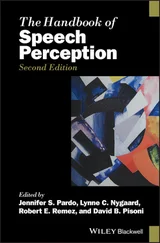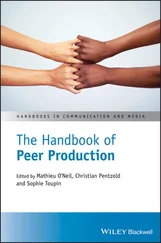Across the four studies there was support for the hypothesized links between attachment anxiety, aversion of solitude, and difficulties in being alone within a close relationship. Specifically, attachment anxiety was significantly associated with the appraisal of more aloneness‐related threats, the report of less capacity to be alone when the partner is at home, and the expression of more difficulties accepting the partner’s periods of solitude. In the experimental session, attachment anxiety was significantly associated with both actors’ and partners’ reports of less ability to be comfortably alone during the aloneness episode and with less positive perceptions of the partner and more negative feelings during both the aloneness and reunion episodes.
The findings also supported the hypothesis that attachment‐avoidant people would prefer to be literally alone and would have difficulty maintaining a balance between solitude and togetherness within a close relationship. Specifically, attachment avoidance was associated with a greater affinity for solitude, but it was also associated with lower ability to be comfortably alone when the partner is at home. In the experimental session, avoidance was significantly associated with both actors’ and partners’ reports of impaired ability to be comfortably alone during the aloneness episode and with less positive perceptions of the partner and less positive feelings during both the aloneness and reunion episodes. Importantly, the observed links between attachment and experiences of solitude could not explained by alternative and related relational and personality constructs, such as relationship satisfaction, trust, intrusiveness, and dependence or self‐direction and autonomy. Rather, the results were found to be a result of attachment dynamics affecting the experience of solitude.
Attachment Orientations and Feelings of Loneliness
The negative mental representations, interpersonal problems, and unstable relationships associated with attachment insecurities not only create problems with being alone and enjoying moments of solitude; they also seem to foster feelings of relationship dissatisfaction and loneliness. The term loneliness refers to a negative psychological experience caused by actual or perceived deficiencies in one’s relationships and from feelings of deprivation in relation to others (Peplau & Perlman, 1982). Larose et al. (2002), for example, defined loneliness as a “subjective distressing and unpleasant state in which individuals perceive deficiencies in their social world” (p. 684). These deficiencies are not only quantitative, such as having few friends or engaging in too few social activities, but are also indicative of poor‐quality relationships in which people feel a lack of intimacy and emotional closeness, and perceive themselves as unloved, unaccepted, insufficiently cared for, misunderstood, or invalidated by a relationship partner (e.g., Ernst & Cacioppo, 1999). The chronic, dispositional form of loneliness is thought to result from a history of relationships with cool, rejecting, inconsistent, or unavailable attachment figures (e.g., Rubenstein & Shaver, 1982; Weiss, 1973).
Working explicitly from an attachment perspective, Weiss (1973) defined loneliness as an emotion that signals unsatisfied needs for proximity, love, and care due to the unavailability and nonresponsiveness of attachment figures. In other words, loneliness is a form of separation distress that results from failure to meet basic attachment needs. As such, loneliness should be mitigated or precluded by partners and relationships that promote a sense of security and satisfy one’s needs for love, acceptance, understanding, and care. In contrast, a history of relationships with unavailable and nonresponsive relationship partners and the resulting attachment insecurities should render a person chronically vulnerable to loneliness (Berlin et al., 1995; Hazan & Shaver, 1987).
Attachment researchers have also hypothesized that anxious attachment is more conducive to loneliness than is avoidant attachment (e.g., Berlin et al., 1995; Hazan & Shaver, 1987). Attachment‐anxious people exaggerate their unsatisfied needs for care and security, which intensifies the psychological pain associated with insufficient or absent love and partner responsiveness. Avoidant people try to deny or inhibit attachment needs and may therefore feel less directly or less consciously frustrated by poor‐quality relationships or nonresponsive partners. As already shown in this chapter, avoidant individuals tend to be disengaged in social interactions, which leads them to feel bored, distant, tense, or irritated (Tidwell et al., 1996), but they can acknowledge those feelings without admitting a need for affection or connectedness. In fact, construing the problem as one of boredom or irritation puts the blame on something outside the avoidant person. One can be bored and critical or dismissing of others without admitting personal needs, insufficiencies, or dependence on others. According to Hazan and Shaver (1987), this stance often allows avoidant people to admit that they are distant from others without missing others or labeling themselves lonely.
These hypotheses have been supported by dozens of studies examining associations between self‐reports of attachment orientation and feelings of loneliness (see Mikulincer & Shaver, 2016, for a complete review of these studies). For example, all studies in which attachment security in relationships with parents during adolescence was correlated with loneliness have produced inverse associations (e.g., Al‐Yagon et al., 2016; Aikins et al., 2009). In addition, more than 95% of the studies that included measures of attachment anxiety or compared anxious with secure people have found that anxious attachment is strongly associated with greater loneliness when examined cross‐sectionally or longitudinally (e.g., Bachem et al., 2019; Pereira et al., 2014). For example, Bartz et al. (2016) found that attachment anxiety was associated with greater loneliness and a higher tendency to attribute humanlike traits (e.g., free will) to nonhuman agents (anthropomorphism), presumably in an attempt to fulfill unmet needs for connection. Moreover, attachment anxiety mediated the link between loneliness and the cognitive bias of anthropomorphism.
Interestingly, most of the studies that have assessed avoidance or compared avoidant with secure individuals have found that avoidant attachment, like attachment anxiety, is associated with greater loneliness (e.g., Heatley Tejada et al., 2017; Itzhaky et al., 2017). This finding might imply that avoidant people may not deactivate their attachment systems to the point of not caring at all about the absence of supportive relationships and may not be able to deny loneliness by interpreting it as boredom. This conclusion is consistent with findings from experimental studies showing that the contextual priming of security‐enhancing representations (e.g., name of a security provider) produced positive cognitive and emotional effects even among people scoring relatively high on avoidant attachment (e.g., Cassidy et al., 2018; Mikulincer et al., 2014). Thus, it seems that avoidant people have a need for security lurking beneath their characteristic avoidant defenses (Shaver & Mikulincer, 2002).
However, even if both anxious and avoidant people tend to feel lonely, only avoidant people seem to choose to withdraw socially and remain isolated. For example, Shaver and Hazan (1987) reported that whereas attachment‐anxious people described themselves as more hopeful and active in their search for relationship partners, avoidant people were more likely to believe they would always be lonely. In fact, avoidant people are more likely to say that during the preceding few years they have not felt in tune with other people, have not been part of a group of friends, and have not felt close to anyone (Shaver & Hazan, 1987). Similarly, studies have found that avoidance is associated with social withdrawal (e.g., Chen et al., 2012; Shallcross et al., 2014) and perception of fewer opportunities for romantic connection especially when there is a potential for connection (Spielmann et al., 2013). In addition, there is evidence that avoidance increases the odds of being single or not being involved in serious dating (e.g., Adamczyk & Bookwala, 2013; Ringstad & Pepping, 2016). However, at odds with these findings, Schachner et al. (2008) found no sign of heighted avoidant attachment in a community sample of long‐term single adults (not being in a committed relationship for the past three or more years and not likely to become committed in the near future) compared to coupled participants. Moreover, Pepping et al. (2018) offered a theoretical model by which long‐term singlehood can result from avoidant deactivation or anxious hyperactivation of the attachment system or from an authentic personal decision sustained by one’s sense of security. That is, being single does not imply being insecure (see also Adamczyk, Chapter 12).
Читать дальше




![О Генри - Справочник Гименея [The Handbook of Hymen]](/books/407356/o-genri-spravochnik-gimeneya-the-handbook-of-hymen-thumb.webp)







